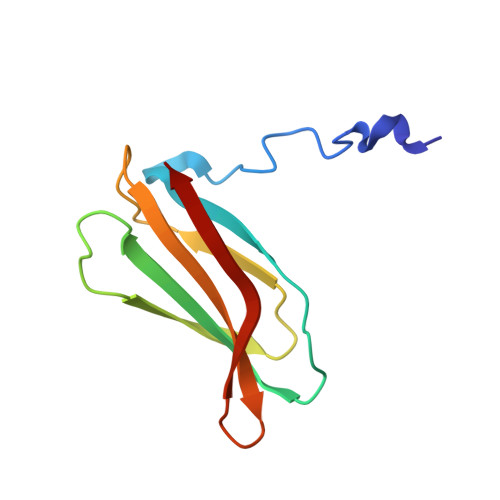Interdomain association in fibronectin: insight into cryptic sites and fibrillogenesis.
Vakonakis, I., Staunton, D., Rooney, L.M., Campbell, I.D.(2007) EMBO J 26: 2575-2583
- PubMed: 17464288
- DOI: https://doi.org/10.1038/sj.emboj.7601694
- Primary Citation of Related Structures:
2H41, 2H45, 2HA1 - PubMed Abstract:
The process by which fibronectin (FN), a soluble multidomain protein found in tissue fluids, forms insoluble fibrillar networks in the extracellular matrix is poorly understood. Cryptic sites found in FN type III domains have been hypothesized to function as nucleation points, thereby initiating fibrillogenesis. Exposure of these sites could occur upon tension-mediated mechanical rearrangement of type III domains. Here, we present the solution structures of the second type III domain of human FN ((2)FNIII), and that of an interaction complex between the first two type III domains ((1-2)FNIII). The two domains are connected through a long linker, flexible in solution. A weak but specific interdomain interaction maintains (1-2)FNIII in a closed conformation that associates weakly with the FN N-terminal 30 kDa fragment (FN30 kDa). Disruption of the interdomain interaction by amino-acid substitutions dramatically enhances association with FN30 kDa. Truncation analysis of (1-2)FNIII reveals that the interdomain linker is necessary for robust (1-2)FNIII-FN30 kDa interaction. We speculate on the importance of this interaction for FN function and present a possible mechanism by which tension could initiate fibrillogenesis.
Organizational Affiliation:
The Department of Biochemistry, University of Oxford, Oxford, UK.













